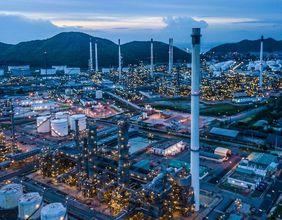Summary
- There has been a seismic shift in the way work is done by organisations due to the COVID-19 impact on businesses, giving backing for “gig economy”.
- Remote working and digital transformation will enable and become the new normal of the workplaces in future
- Virtual workplace, clear communication and redesigned office spaces will be some of the characteristics of the workplace of tomorrow
In the wake of COVID-19 crisis, the world of employment is seriously disrupted and many parts of society – including companies, employees and social groups – are expected to perform a role in supporting workers, their families, and the broader community.
Coronavirus has given an exclusive opportunity to drive in new ways of working termed as ‘new normal’. It has induced an increase incoherent work structure where people are being asked to work all level jobs irrespective of their designations due to shortage of staff and ensure a smooth work environment. Initially, the remote working scenario was witnessed as a temporary work arrangement when the government imposed first lockdowns to contain the virus spread. But with a continued extension of lockdowns amid rising cases, it has been recognised that the new method of operation is going to persist for longer.
While some industries like the technology sector were already familiar with the remote working concept, but coronavirus has forced businesses in every sector to adopt the same. This shift has also asserted the fact that digitally savvy businesses can adapt to crisis conditions more rapidly and thereby improving their odds of success.
The new workplace environment of tomorrow will be characterised by the following:
- Technology-driven economy
The remote working undoubtedly thrives on technology, the unsaid component. Technology will be universal in meetings, conferences, collaborations, and cloud-based applications. Further, digital networking can contribute to improved corporation not only on a regional but also on an international scale. It will help diversify as well as connect sectors and companies across territorial borders. Further, it can give a lease to a modern model of cooperation and partnership enabled by technical advances and remote work environments. Geographical-related sectors and economies would gradually disappear into a thing of the past.
ALSO READ: COVID-19 Diary: The Perfect Recipe for Success in Technology and E-commerce Space
There are also expectations of increased implementation of smart building technologies to enhance the journey of an employee to the office and reduce high touch areas where many fingers touch the same spot. Technology will help in cutting down time spent in commuting, negotiating, discussing, leading to much quicker and better outcomes contingent on the extent of technology usage by the corresponding company.
- Clear communication
Communication is vital to give transparency during this challenging environment. While the importance and comfort of a physical work structure cannot be eliminated, a lack of physical interaction and engagement can inculcate the feeling of ambiguity and hesitation amongst employees. Companies must ensure that maintaining a healthy and vibrant interactive culture is crucial for the workplaces.
All kinds of miscommunication must be avoided by proper dissemination of information and evading fake news. Daily synchronisations, routine review meetings, frequent acknowledgement of good work and inculcating virtual bonds can encourage a positive work culture.
- Redesigning of workplaces
COVID-19 pandemic has shown the requirement for a flexible organisation that can easily alter its way of operating to maintain continuity of operations in case of a next disaster or occurrence of any other unpredictable event.
Only very few organisations can continue to stay in a completely remote work environment; the majority will accept greater versatility in accommodating various work conditions and circumstances for their workers. This adoption will improve the effectiveness of individuals and teams and provides organisations with the chance to assign workspaces in more efficient and smarter ways. Such an office space can further entice the younger generation or millennials more, who support work-life amalgamation by deciding whether and when to do their job.
ALSO READ: Advantages of working from home for businesses, employees, and employers
Further, new office spaces will witness increased use of a single workstation by multiple workers at different time periods popularly known as hot-desking, smart scheduling and a design that will not follow the concept of office operating at full capacity. Deployment and modification of existing space will be of importance now.
- Redefining the purpose of workplace
It is not only challenging and exhausting to function with continuous distractions in an open and loud environment, but it can often disperse infections quickly as the workers are repeatedly working at different desks throughout the day or week.
The increasing trend of the mobile workforce does not mean the extinction of office spaces, but there is a need to redefine the very purpose of offices in the new normal. The physical workspace will now turn into a place to go for doing specific tasks. With a surge in the use of mobile apps, cameras and biometrics, workspaces may identify an employee and add personal preferences to adjustable tables, lighting, cooling, and music. The data created in such linked ecosystems helps enterprises to automate the workplace from both a cost and a practical viewpoint. This is modular by type and will be a useful resource to support a productive workforce.
- Reduced commute time and changed habits
The post coronavirus environment will lead to behavioural changes in spending habits of consumers and sophisticated laws of demand and supply. Refining of our thinking abilities and strategies at user-centric level, keeping the new-normal in mind will be very crucial in future.
Remote working will significantly reduce the time spent by workers in commuting. Lockdown has revealed what comprises an essential business commute and showed that it is not a tough task to work from home, and one can deliver his/her work with the same efficiency while at home. These signs will guarantee greater workplace flexibility & prepare the way towards a gig economy.
During the COVID-19 pandemic, companies have encountered a burst of growth, accelerating into the future that tested their capabilities to combine people and technologies in the most complex environment ever witnessed. Though coronavirus led to taking up a few unmatched measures, the sustainability of those actions is where the real road to recovery will start.





_05_02_2023_11_39_05_949694.jpg)
